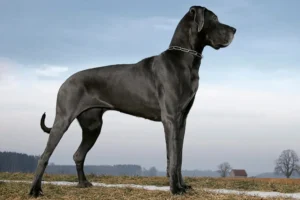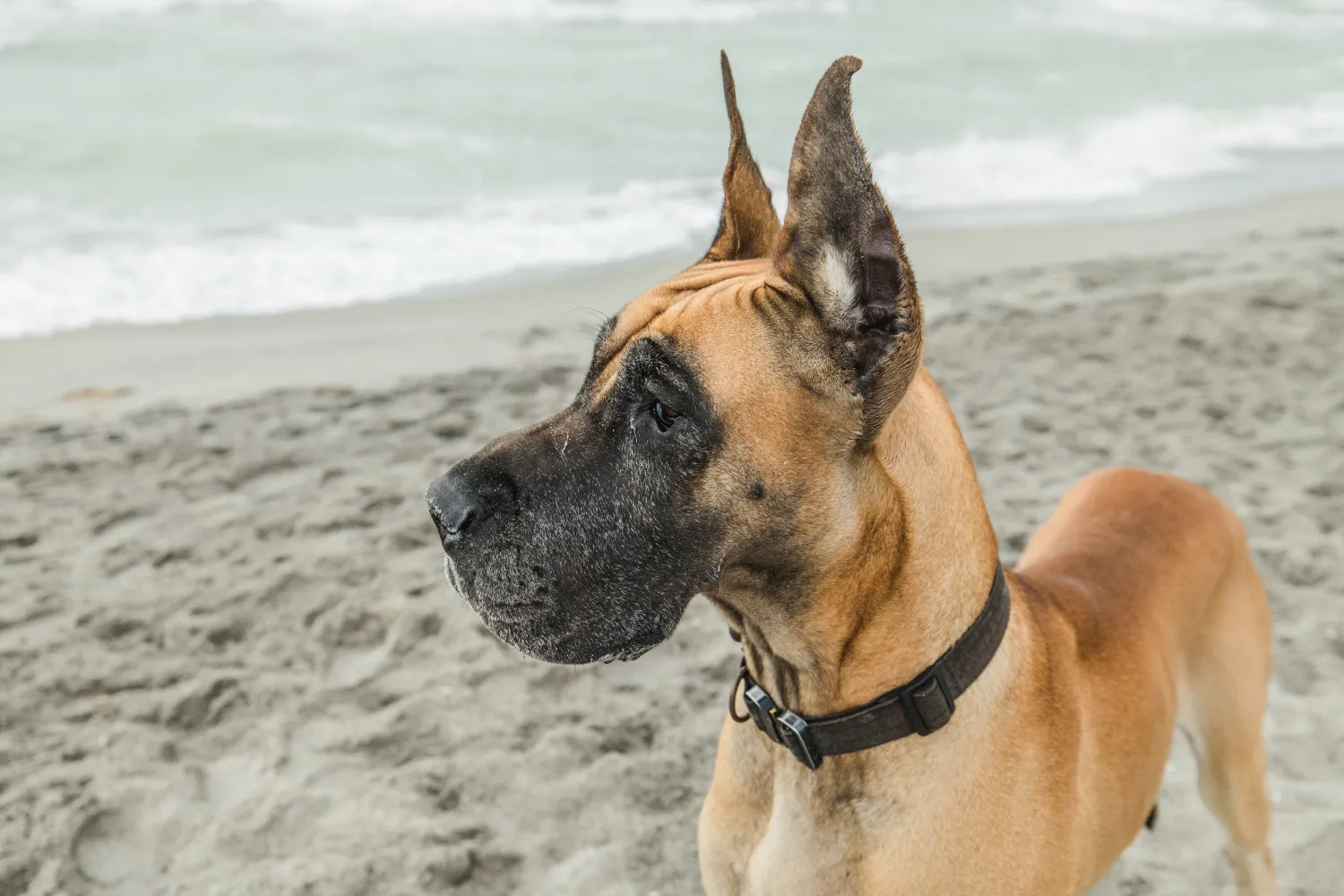
BOGO: buy a box of Longevity15 and get Yummy Combs free!
Shop now and get the BOGO deal today!
Joseph Roetheli, PhD

Highlights:
Giant breeds are considered breeds that weigh over 90 pounds.
Caring for and raising a giant-breed dog requires space, training, and attention to your dog’s special needs.
Giant breeds tend to have shorter lifespans than their smaller counterparts. One way to support their longevity is through a groundbreaking supplement called Longevity15.
Caring for a giant-breed dog requires a lot of space, an understanding of their specific needs, and a little patience, especially if you find yourself cleaning up a giant-sized “accident” your dog makes in your home.
We’ll explain everything you need to know about owning a giant-breed dog and help you decide if owning one is right for you.
Not all breeds of dogs that you probably consider “giant” are considered giant breeds. For instance, a golden retriever is arguably a big dog, but they aren’t a giant breed. Giant breeds are considered dogs that weigh over 90 pounds when fully grown.
These breeds include:
While this is not an exhaustive list of giant-breed dogs, it’s a list of some of the most popular. Most of these breeds will weigh between 50-80 pounds by six months of age.
Unlike other breeds, giant breeds tend to be slower to mature both physically and mentally. That doesn’t mean your giant-breed dog isn’t smart; it just means they mature at a very different rate than some other dog breeds. Because of the slower growth rate, you’ll need to exercise more caution with them.
For instance, even though your dog appears to be fully grown and capable of knowing its limits, it isn’t. Giant breeds can be prone to joint injuries as puppies, so ensuring they are exercising and playing safely is key to keeping them injury free.
It probably comes as no surprise, but a giant-breed dog may cost you more in food, supplies, and veterinary care. A dog that weighs over 90 pounds requires about 4-5 cups of food (sometimes more) per day. The cost of simply feeding your dog can quickly add up.
In addition, medications like heartworm, flea, and tick tablets will cost more because they are based on body weight. Some veterinary clinics charge more for giant-breed care, and some aren’t even equipped with tools to offer proper care. You’ll want to make sure your veterinarian can see your dog and has the space and equipment necessary to handle their care.
Grooming your giant breed is another consideration you’ll need to make when budgeting for your animal’s care. Grooming fees for giant breeds with long hair (like an Afghan Hound) can cost much more due to the necessity of removing dreads, combing, and cutting their hair.
If pet insurance is a consideration, talk to your insurance agent about the difference in rates between breeds. Some breeds are more prone to health problems, which may result in a higher premium if you opt to purchase pet insurance.
One of the single most important considerations to make before adopting a giant-breed dog is space. Most giant breeds need ample space to run freely and a home environment that allows them to move freely without bumping into furniture or knocking things off shelves.
If you plan to crate train your dog, you’ll need a crate big enough to accommodate them and a location that is big enough for said crate. Considering giant breeds frequently weigh over 100 pounds and stand 2-2.5 feet tall, you’ll be purchasing a relatively giant crate and giant items that need to fit safely inside your home. Water dishes, food bowls, toys, and dog beds will all be giant when your dog is giant.
If you live in an apartment or a deed-restricted community, you’ll need to check the rules and/or covenants to make sure that giant breeds are allowable. In an apartment complex, you usually need to fill out a request and pay an animal deposit.
It’s important to remember that even though you love giant-breed dogs, not everyone does. If you take your dog for a walk, there’s a chance the sheer size of your dog can frighten people who do not understand your dog is safe.
Additionally, it’s important to always clean up after your dog when walking them. For giant-breed dogs, a combination scoop-and-bag tool works great for easy clean-up.
All dogs can benefit from training, but giant breed dogs need it more than smaller breeds. In addition to potty training, you’ll want to train your dog to avoid behaviors like:
Training is also an essential tool for teaching your dog to walk, sit, and come when you call. These important training tools may not be a big deal if you have a chihuahua, but for giant breeds, pulling and excessive barking can be problematic.
Big dogs have big needs, and you’ll need to be aware of them before deciding to adopt a giant-breed dog. Each dog breed has its own health issues, and giant breeds are prone to issues like hip dysplasia, bloat, gastric issues, and hypothyroidism. Talk to your veterinarian about additional concerns.
Giant-breed dogs also present a unique need for travel. If you plan to travel with your dog in a crate, you’ll need a vehicle that can comfortably accommodate the crate. You’ll also need to invest in leashes and harnesses that can keep your dog safe while walking or visiting the veterinarian or groomer.
For giant-breed dogs, close attention to the diet is important to avoid bone and joint problems. Maintaining a healthy weight is essential for giant-breed dogs to help them avoid these issues and potentially protect their lifespan.
Giant breed dogs can live between 8-10 years. This is somewhat shorter than smaller or medium-breed dogs. You can support your dog’s longevity by ensuring they are eating a healthy diet, getting plenty of exercise, and visiting their veterinarian for regular check-ups. Another tool that can help extend your dog’s life? Supplements.
When it comes to supplementation, nothing does what Longevity15 does for large dogs. Longevity15 is the first and only supplement available for dogs that contains pentadecanoic acid, also known as C15:0. C15:0 is an odd-chain, saturated fatty acid that is the first essential fatty acid to have been discovered since the omegas over 90 years ago.
C15:0 helps to support your dog’s heart health and liver function by targeting the foundation of your dog’s health: their cells. C15:0 deep dives into cells to keep them supported, which helps support your dog’s entire body.
C15:0:
The C15:0 in Longevity15 helps support your dog’s wellness and is one of the smartest moves you can make to help your giant dog live healthier longer. Best of all, it comes free of side effects and won’t ever give them any fishy breath. That means fresher breath and more close cuddles.
Before you start looking for a giant breed to adopt, here is a list of pros and cons to help the decision-making process.
If you’ve got your heart set on a giant breed dog, it is important to understand their needs before you adopt. If a giant-breed checks all the boxes on your must-have dog list, then it’s probably the right decision to bring one of these titans of the canine world home.
Just be sure to invest the time and resources they need for a full and happy life, and grab some Longevity15.
Sources:
Meet the Giant Dog Breeds: What to Know About Giant Dogs | American Kennel Club.org
Dog Feeding Chart: How Much Food Should I Feed My Dog? | PetMD
Updates, coupons, deals, and more!
Type anything...
We use cookies to provide you the best possible experience on our website. You consent to the usage of cookies by continuing to view our website. See our Privacy Notice for more information.